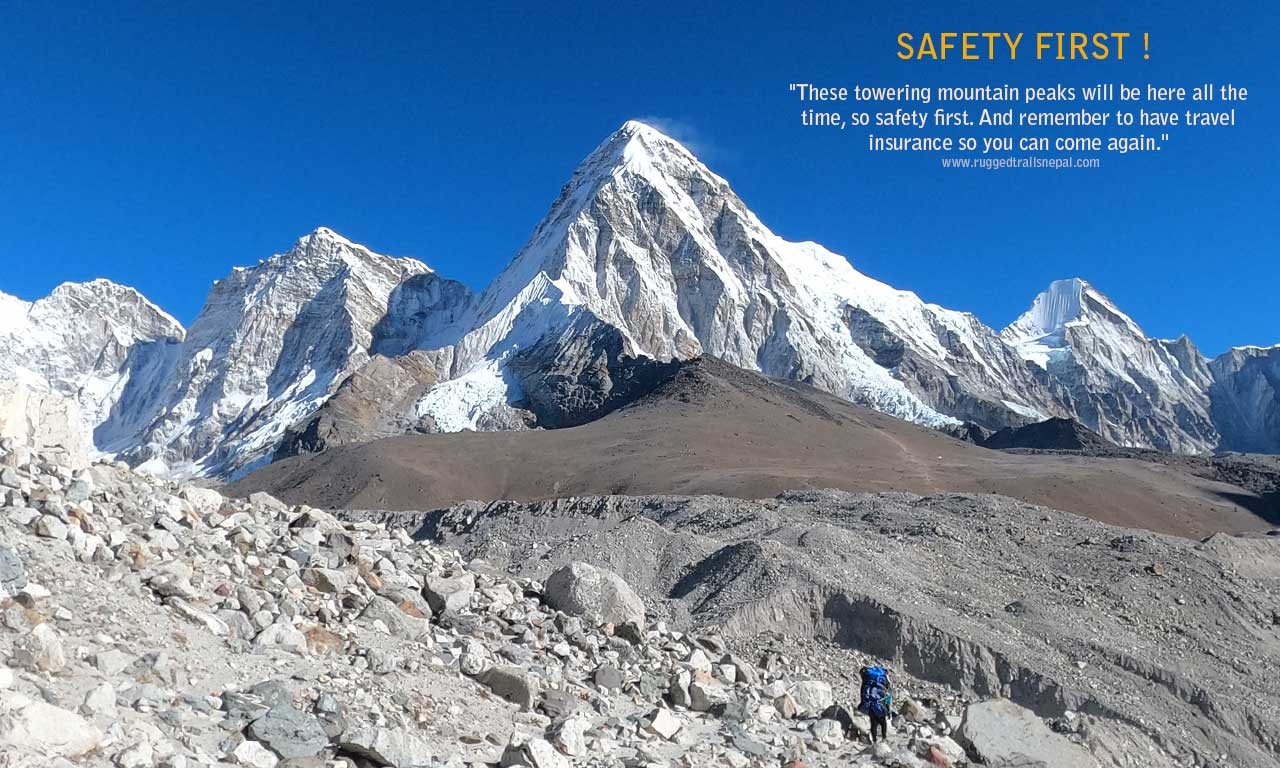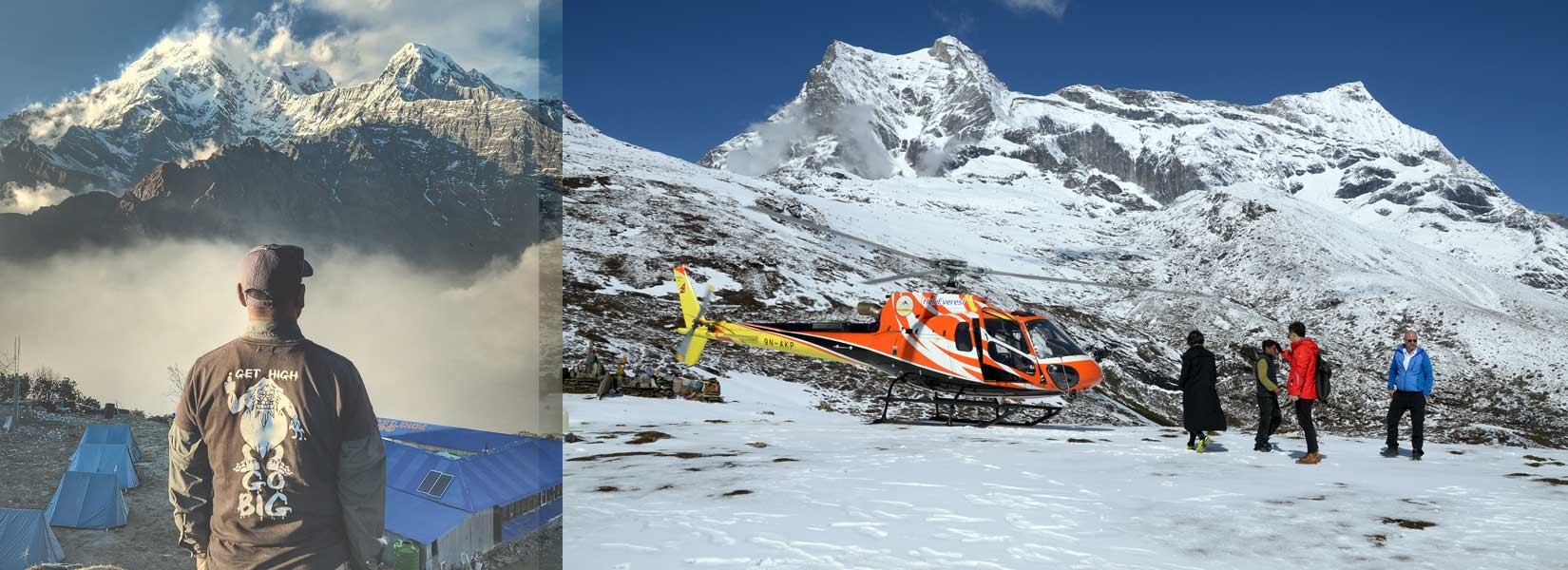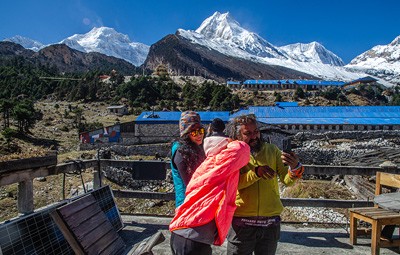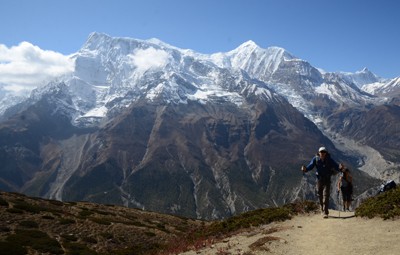Let's clear things up and answer the most important issues that trekkers have concerning travel insurance in Nepal.
Do you have to have travel insurance to go trekking in Nepal?
A: Yes, you must have full personal travel insurance to go on high-altitude treks, peak climbs, expeditions, and adventure activities (like rafting, paragliding, etc.) with them. It's essential for your safety and how they operate. While it might not be as crucial for easily accessible, lower-altitude treks like Ghandruk, Poon Hill, or Nagarkot, it's still a good idea. Furthermore, travel insurance isn't just for trekking and evacuation; it covers various other situations, as you will see below.
Why is insurance so important for Nepal Trekking?
A: Nepal's beauty is matched by how far away it is and how rough the land is. Standard health insurance or cheap travel insurance typically don't cover enough. You need coverage that is made just for the dangers you face. Above 3,500 meters, high altitude sickness (AMS) is a real and perhaps deadly concern. Your policy must clearly say that it covers treatment and evacuation for altitude sickness.
- Emergency Helicopter Evacuation: In the highlands, a helicopter is often the only way to get help for a major illness or injury. This is the most important coverage of all. Evacuations cost at least $3,000 USD and can cost a lot more. Your policy should have at least $10,000 in evacuation coverage, and it would be best if providers were paid directly.
- Accidents and General Illness: Medical care and possible evacuation costs must be covered for everything from falling on a trail to getting a stomach virus.
- Trip Cancellation/Interruption: Things you didn't plan for, like being sick, having a family emergency, or a natural disaster, might ruin your pricey trip before it even starts or make you have to cut it short.
- Travel delays and missed connections: The weather in the mountains can change quickly. Flights to Lukla (Everest), Far West Nepal, and other mountain airports are often delayed or cancelled for days at a time. Insurance should pay for extra costs of housing and transportation, including charter helicopters!
- Lost, Stolen, or Delayed Baggage: It's expensive and frustrating to have to buy new hiking gear in the middle of a journey.
How much altitude coverage do I really need? Don't Get Caught!
A: This is where a lot of common policies go wrong in a big way. You MUST check that your policy covers climbing to the exact highest point on your route. A lot of standard policies only cover up to 4,000 meters (13,123 feet). This is not enough for popular hikes:
Suggestion: Make sure your coverage clearly covers trekking up to at least 6,000 meters (19,685 feet). If you need to, call your insurance company and obtain this in writing. Don't make any assumptions!
"I'm an Indian citizen. Are there any special considerations for me regarding travel insurance?
Yes, absolutely. You must be extremely careful when choosing your insurance provider. Some major Indian insurance companies have reportedly caused problems for Nepalese evacuation services. (We prefer not to name them, but we strongly recommend you choose from our suggested options.) Why? Because according to evacuation companies in Nepal, it has been very difficult, and often impossible, to get these particular insurers to honor claims.
For Indian citizens, we suggest: Nepal Trekking Insurance (which specifically covers Nepal).
- Insurance from ISA
- Bharati AXA Travel Insurance
- ICICI Lombard
- HDFC Ergo Travel Insurance
- Reliance Travel Insurance
- Bajaj Allianz Travel Insurance
Which Insurance Companies Are Best for Nepal Trekking?
A: Find companies that focus in adventure travel or coverage at high altitudes. Here are some of the best suggestions based on nationality (always check the altitude limits!):
Options that are popular around the world:
- World Nomads: A lot of people use it and it's great for adventure activities (check the altitude!).
- Travelex Insurance Services: Very good for treks at high altitudes
- Nepal Trekking Insurance (https://www.nepaltrekkinginsurance.com) is made just for Nepal and makes it easy to file claims in Kathmandu., some people are using it but we had never experinced with this.
Canada and the US:
- Travel Guard (https://www.travelguard.com)
- World Nomads (https://www.worldnomads.com)
- Travelex Insurance (https://www.travelex-insurance.com)
Australia, New Zealand, and Southeast Asia:
- Cover More (https://www.covermore.com.au
- Allianz (https://www.allianz.com.au)
- World Nomads (https://www.worldnomads.com.au)
- 1Cover Travel Insurance (https://www.1cover.com.au/)
For people travelling to the UK:
- Travel Guard UK (https://www.travel-guard.co.uk)
- World Nomads UK (https://www.worldnomads.co.uk)
For Europeans:
- Europ Assistance (https://www.europ-assistance.com/en)
- ADAC (Germany) (https://www.adac.de)
For Vietnamese;
Rugged Trails Nepal Experince with AIG. Some travel insurance, like AIG, completely covered trip cancellations. We had plenty of Vietnamese trekkers with us, and based on our personal experience with AIG, we recommend this insurance company. Some of our clients couldn't travel at the last minute because of sickness, and this insurance company accommodated our customers.
What do I do after I have insurance?
- READ YOUR POLICY DOCUMENTS: Know clearly what is and isn't covered, especially the limits on altitude, the amounts for evacuation, and the adventure activities.
- Show proof: Keep both digital and paper copies of your insurance certificate, which should include your policy number and the emergency assistance number that is available 24/7.
- Give More Information: When you get to Kathmandu, provide your trekking agency (like Rugged Trails Nepal) your insurance details. They need it for emergency situations.
- Learn how the claims process works: Find out if you need to pay first and then file a claim (save all receipts!). Or if your insurance company pays providers directly (best).
Some travel insurance policies will require you to pay in advance yourself and later claim with the proper bills, invoices, and expense reports. In such situations, Rugged Trails Nepal will provide all the necessary documentation and proper invoices.
MUST DO; Once you land in Kathmandu, Nepal, or before heading to the big hikes, write to your travel insurance company to inform them that you've started your journey to the Himalayas. Just in case of anything, the local tour operator will connect with them. In some critical cases, we may have to take immediate action without informing your travel insurance, as we don't want to wait for approval when it comes to saving your life.
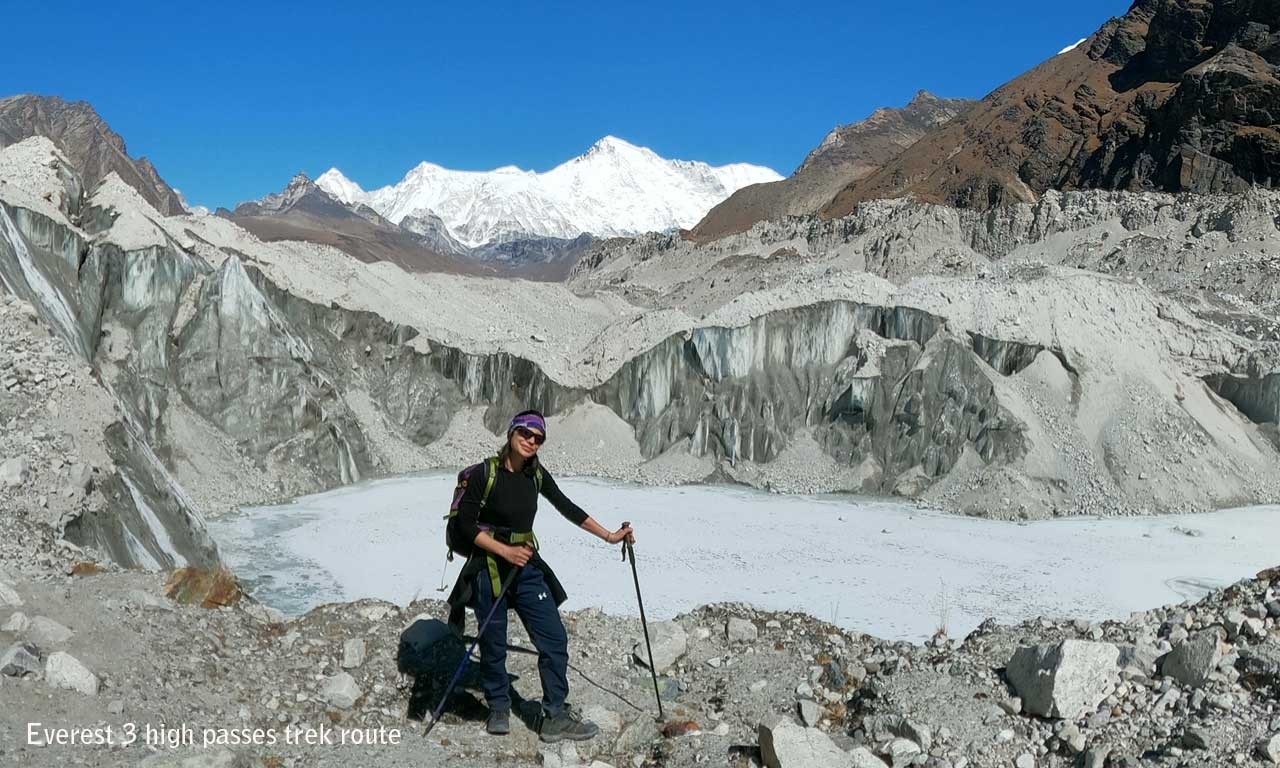
Don't Let the Mountains Catch You Off Guard
Travel insurance for your Nepal trip isn't just a suggestion; it's essential. It protects your safety, peace of mind, and finances. The Himalayas can be unpredictable: altitude sickness strikes, flights get canceled, and accidents can happen. Imagine being at 5,000 meters, severely ill. A helicopter is your only option. With the right insurance, you'll have direct coverage for high-altitude evacuation up to 6,000m, removing immense stress during a critical time. "Generally, oxygen is not included in your trip price. Imagine needing oxygen at 4000m; that would incur an additional cost, and in such cases, your insurance would also be beneficial."
Choose a policy that explicitly covers high altitudes and emergency evacuation, and pick a reputable provider (especially for Indian nationals). This turns insurance into a powerful safety net, letting you fully experience Nepal's magic with confidence. Get covered, then get ready for an unforgettable adventure!
